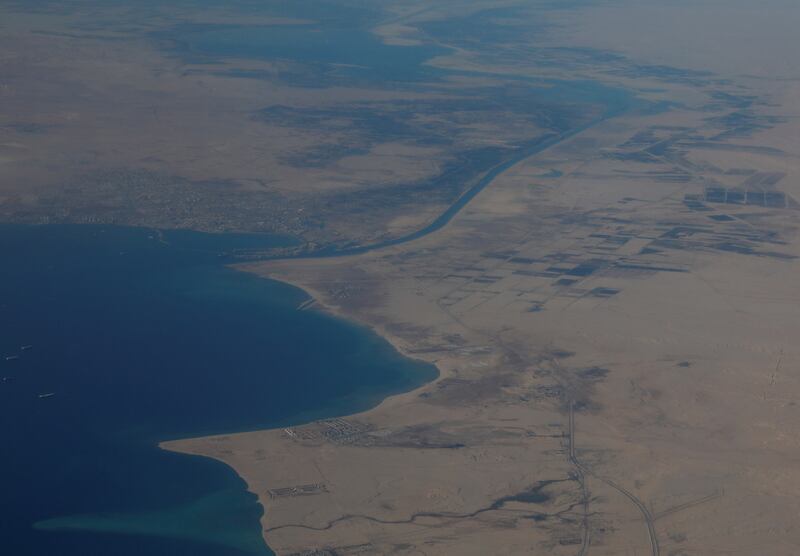A 4.1-magnitude earthquake that struck north-east Egypt in the early hours of Friday was unremarkable and not related to the aftershocks still rocking Turkey and Syria in the wake of the 7.8-magnitude earthquake this month, experts told The National.
“The Gulf of Suez is active seismically, but far less than the Gulf of Aqaba. This magnitude-4 earthquake is nothing special. In fact, magnitude-4 earthquakes can happen almost anywhere, anytime,” Martin Mai, professor of geophysics at King Abdullah University in Saudi Arabia, told The National.
The National Institute for Astronomical and Geophysical Research in Egypt said that the earthquake occurred at 12.25am local time, 27km north of the city of Suez, at a depth of 10km. It was felt by citizens in several regions of the country but there were no reports of damage or injuries.
The region has been on heightened alert since the devastating earthquake that struck Turkey and Syria on February 6 that has killed more than 46,000 people and left millions homeless.
Since then, several more earthquakes and aftershocks have been felt across the region, more recently last Monday when a 6.4-magnitude earthquake struck the Turkey-Syria border region that was also felt in Syria, Egypt, Israel and Lebanon.
“I would not give attention to this event, aside from that it is a small earthquake, because it has happened often in the past in the Gulf of Suez,” Prof Mai added.
Other experts said there had been seismic activity in the wider Middle East region before and after February 6 and that it was not surprising.
“I’ve been looking up the seismicity since the main shock in the Lebanon area and I saw that there was an earthquake on February 8, an earthquake on February 7, and an earthquake on February 22. I also saw that there was an earthquake on January 21. So you can see there’s been some seismicity before the sequence and some seismicity afterwards,” earthquake scientist Judith Hubbard told the Lebanese LBCI television channel.
“There might have been a slight increase in the size of seismicity but I’m not sure you’d be able to tell very much whether these are related to the current events or not. But Lebanon is at risk of moderate-size earthquakes and there’s been a little bit of change in the area, so it wouldn’t be surprising to see a slight increase in the level of activity, but we should see it tail off over time,” she added.
After the earthquakes in Turkey and Syria, the United States Geological Survey outlined three scenarios in regard to aftershocks, with the most likely scenario being a 90 per cent chance that earthquakes will decrease in frequency, with none being larger than magnitude 7 in the weeks to come.
“In this scenario, moderate aftershocks between M5 and M6 are still likely. These moderate quakes can cause damage, particularly to weakened or older buildings not built to withstand earthquakes. The other two scenarios are less likely, yet more extreme,” the USGS said.
“Smaller-magnitude earthquakes between M3 and M4 will continue to be felt by people near the epicentre. Aftershock sequences can last years to decades, long after people stop feeling the increasingly smaller magnitude earthquakes,” it added.







